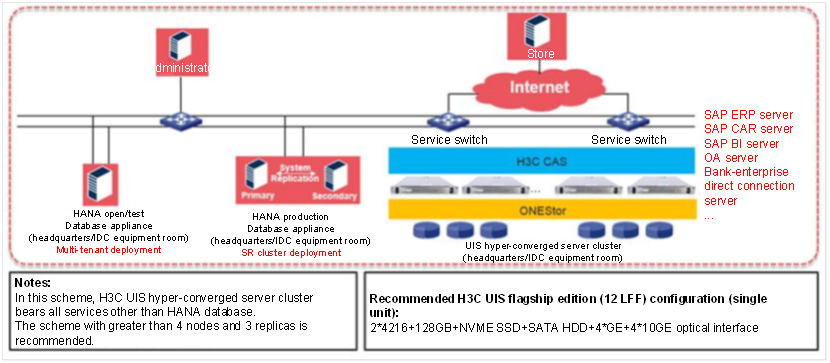Hyper-convergence Solution for Chain Catering Industry
Status of industry
China's catering industry has been informationized for ten years. Information technology has permeated the food and meal ordering, logistics, procurement, cost control, customer management, kitchen management, financial management and other links of catering industry. In recent years, the catering industry has entered an era of low profits. With increased demand for transformation and upgrading and intensified competitive pressure, informatization process in China's catering industry is further accelerated. With the deepening of the enterprise's understanding of the information application, the increasing investment and the further clarification of the demand, the information construction of the catering enterprises in China will be further improved and developed in such aspects as the information strategic planning, integrated solution, system customization, data sharing, cloud computing and mobile Internet application.
Information system architecture of chain catering enterprises

System architecture of a well-known chain catering enterprise

Recommended configuration of hyper-converged solution for chain catering enterprises

Benefits of a hyper-converged information system for chain catering enterprises
1. Unified interface and simplified management
• The O&M personnel can manage the server, virtualization, storage, and network resources in a unified manner through the UIS hyper-converged management platform to eliminate the management gap and improve O&M efficiency.
2. Linear expansion of capacity and performance
• The traditional storage architecture has a closed source and the overall storage performance depends on the controller. When a large expansion capability is achieved, heads need to be added to improve storage performance, resulting in difficult and costly scale-out of traditional storage.
• The UIS hyper-convergence uses distributed storage instead of traditional storage. The overall architecture takes performance and price into consideration. When the UIS hyper-convergence extends to a certain number of nodes, its performance is better than traditional storage, which can greatly save customer storage investment.
3. Smooth migration in case of service fault
• The UIS hyper-converged architecture provides high-availability mechanisms for virtualization and distributed storage. When the service system is faulty or the device breaks down, the UIS hyper-converged platform can smoothly migrate the service online, to ensure the stability and reliability of the customer's service system.
4. Flexible expansion to eliminate management gap
• The traditional IT architecture has expansion difficulties such as data isolation and management gap. When the customer's physical resources in the current cluster cannot meet the service growth requirement, they can rely on a hyper-converged appliance to realize horizontal scaling in computing, storage, network, security and other physical resources.
5. Rapid going online of integrated software and hardware
• In the traditional IT architecture, customers need to communicate with different manufacturers and perform joint commissioning before launching a new service system. As a result, the period for bringing a service online is extended. There will be disputes later in the service system due to management gap and software/hardware decoupling issues.
• The UIS hyper-converged appliance is pre-installed with the hyper-converged software. The hyper-converged system can be built in 30 minutes when the network environment is powered on, which is much better than the traditional x86 architecture.


